From Dutch and Belgian frietjes to American hash browns, every country has their version of fried potatoes, and Spain is no exception. Its signature dish, patatas bravas, is never missing from the menu at any tapas bar. It’s quick and easy to make at home with only a handful of ingredients!
Be sure to make your own bravas sauce for the best flavor, and whip up some pinchos morunos (pork skewers) to round out the meal! Check out my roundup of the 50 best Spanish tapas recipes for more ideas.
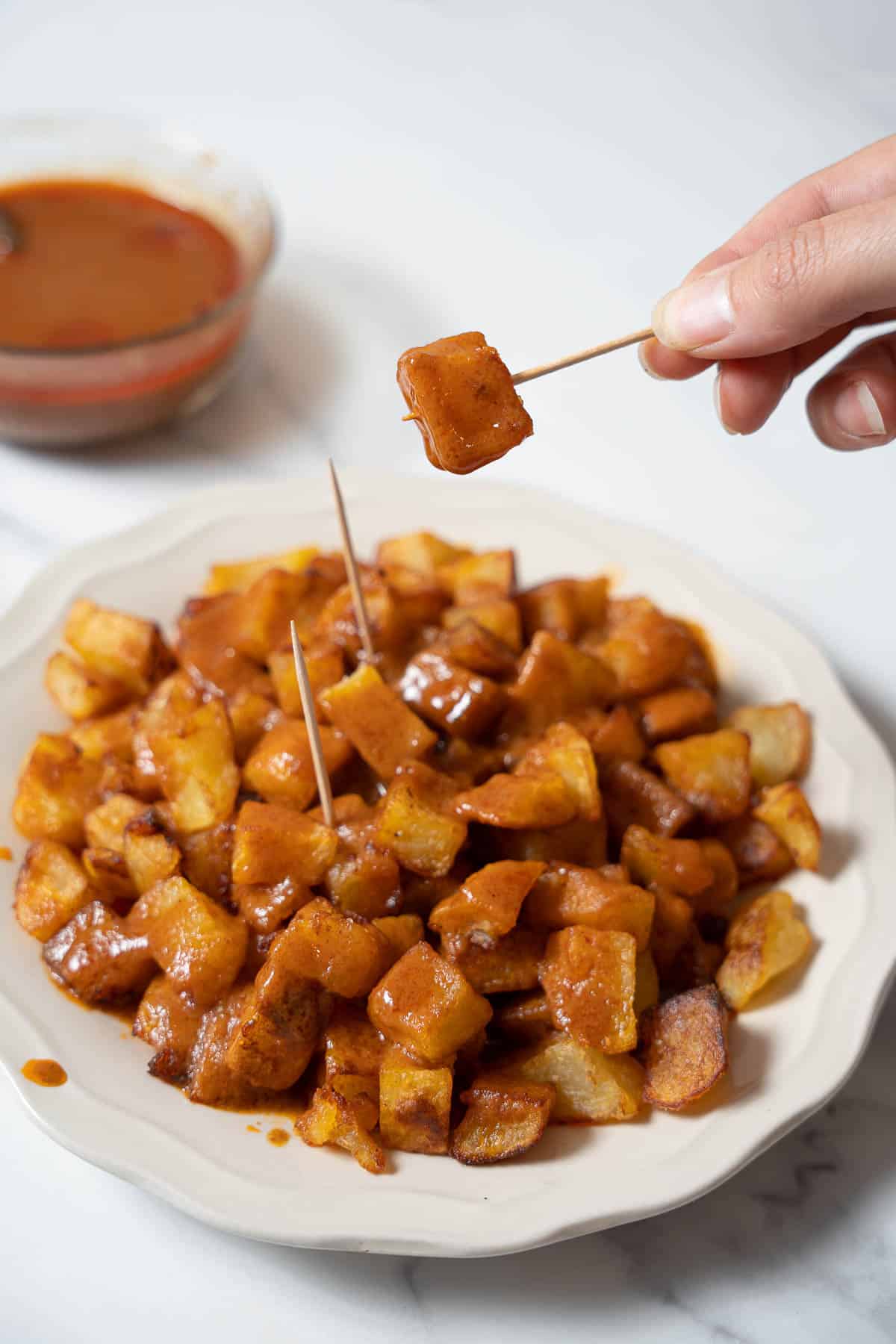
Jump to:
Introduction
Patatas bravas are one of Spain's most popular tapas. They're the go-to choice for an appetizer or a snack to share along with a round of cañas. You can always tell the overall quality of a restaurant by the quality of its patatas bravas. It's an incredibly simple—and cheap—dish, but everyone has their own way of doing it!
In patatas bravas, you’ll find two simple ingredients: potatoes and bravas sauce. The potatoes are cut into bite-size chunks and deep fried in olive oil. The bravas sauce is usually drizzled on the potatoes before serving. This Spanish condiment is bright red and only slightly spicy, which explains its name: brava roughly translates to "brave." Although bravas sauce isn’t usually really hot, sometimes it can be!
Many people prefer to accompany patatas bravas with alioli, a garlicky mayonnaise that provides a contrast and cuts the spice. The two sauces might be drizzled on top, or may come on the side. However, purists consider this dish to be potatoes smothered in bravas sauce and nothing else.
Ingredients
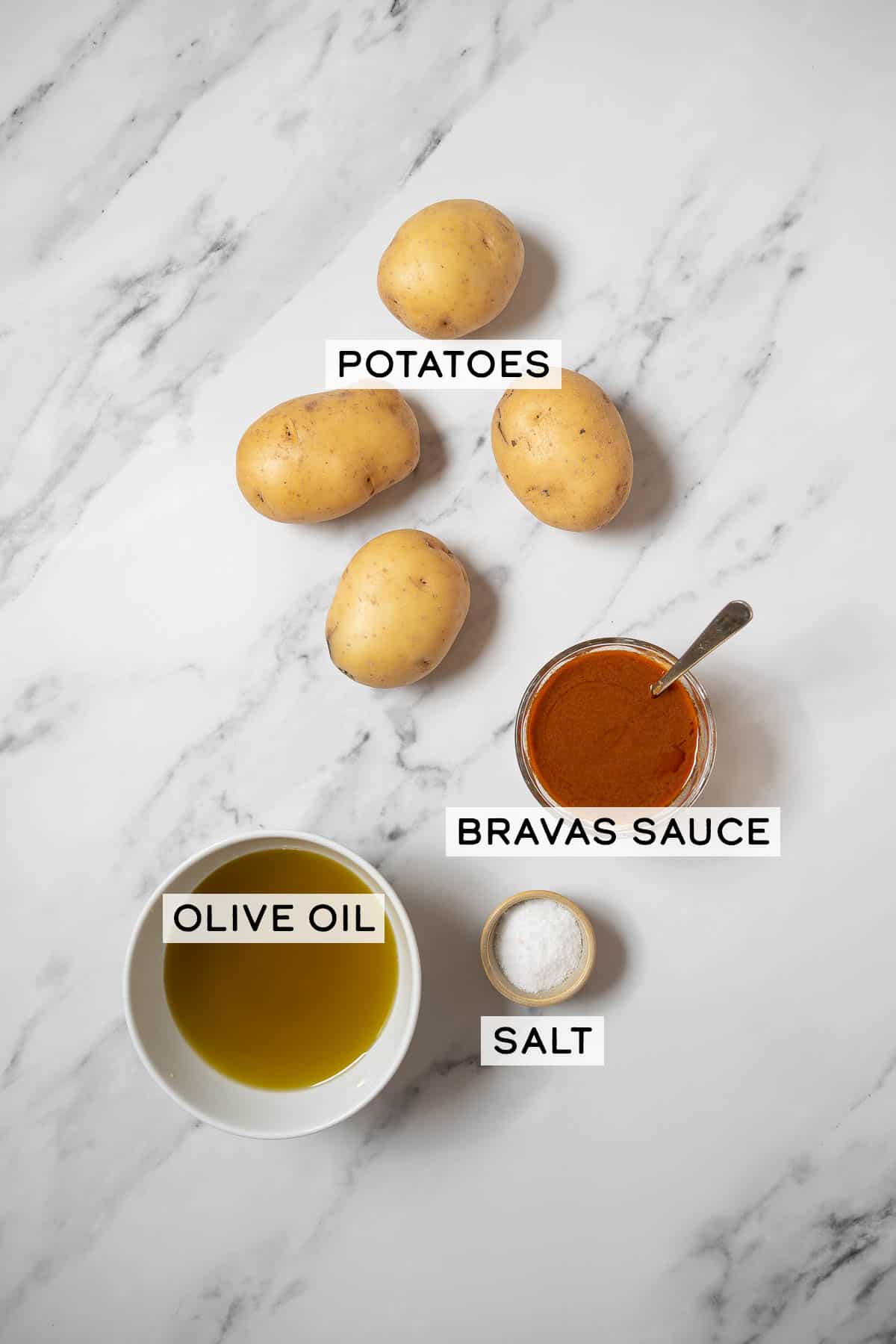
Wondering what ingredients you need to make patatas bravas? Fortunately, there's only a couple of simple ingredients you'll need--and you may already have them in your pantry.
- Potatoes: This is, of course, the key ingredient! It's best to use a fluffy, all-purpose potato here, such as russet or Maris Piper.
- Olive Oil: Choose a good quality olive oil (preferably Spanish if you can find some).
- Bravas Sauce: You can use ready made if you can find some, but it's best to make your own bravas sauce for the best flavor. It takes only 6 simple ingredients and 15 minutes to make!
- Salt: This is crucial to adding lots of flavor to the deep fried potatoes. Use regular table salt or flaky sea salt.
See recipe card for full information on ingredients and quantities.
Variations
- Vegan: Make sure you're using vegan bravas sauce, or make your own using vegetable broth instead of the traditional chicken broth.
- Want to try something different? Drizzle the patatas bravas with garlic alioli for extra flavor!
How to Make
If you’d like to see the full ingredients and instructions, scroll to the bottom of the post for the printable recipe card.
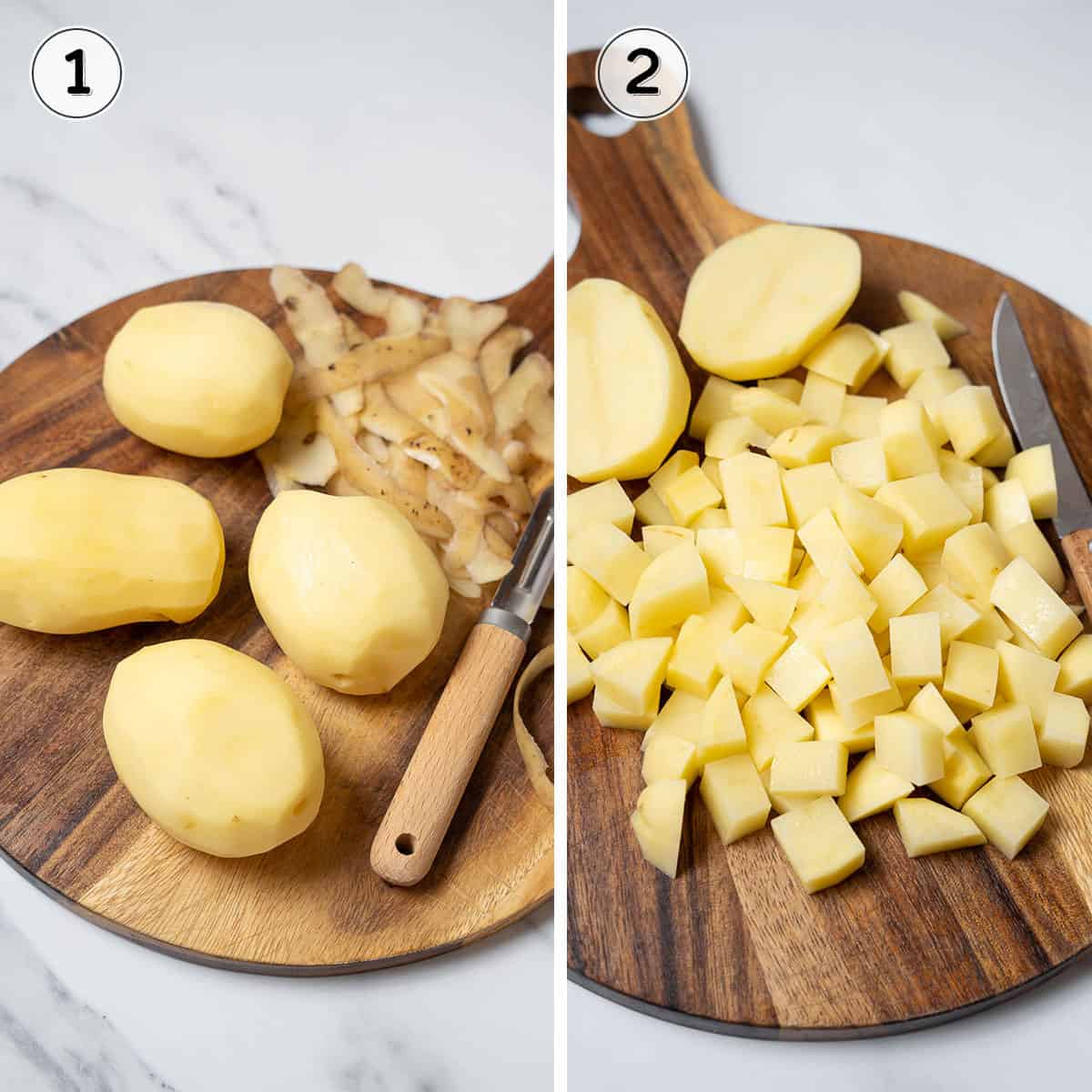
- Rinse and peel the potatoes.
- Cut them into bite-sized chunks.
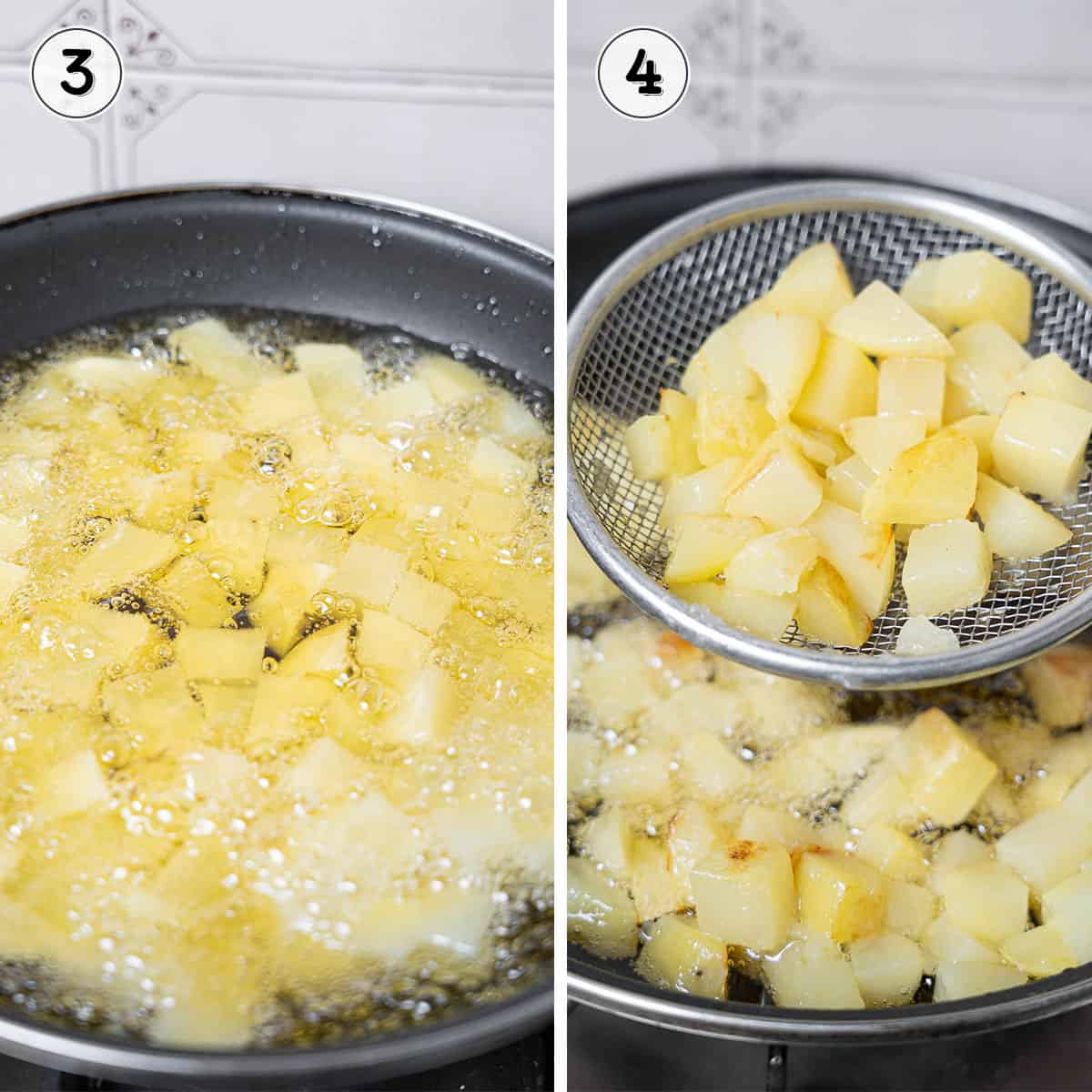
- Heat the olive oil to 350°F (176°C), then add the potatoes and allow them to pre-cook for a few minutes on low heat.
- Remove the potatoes from the hot oil and allow them to cool in the fridge for a few minutes.
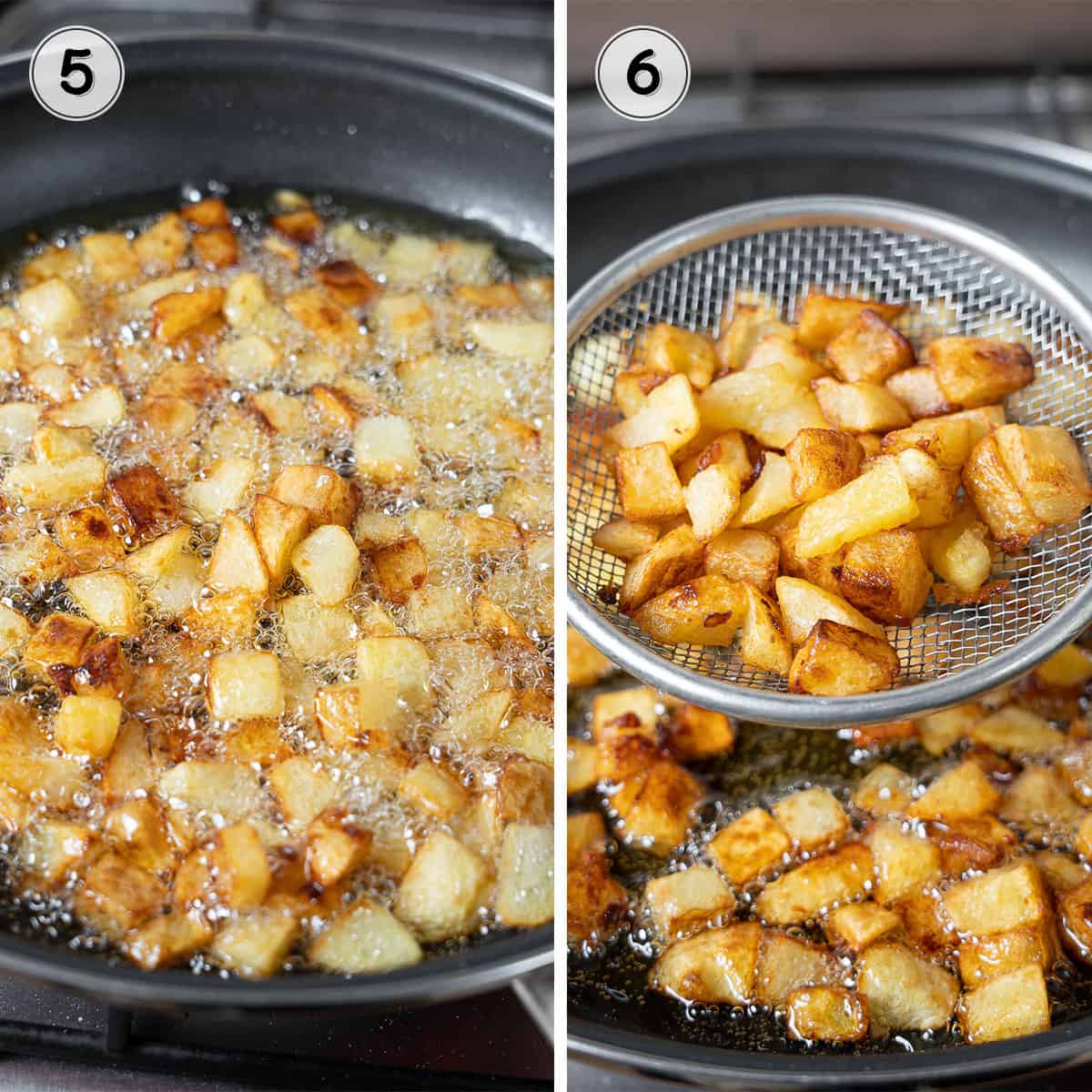
- Reheat the oil to 350°F (176°C) and add the potatoes back to the pan.
- Cook until golden, using a skimmer to remove them from the hot oil.
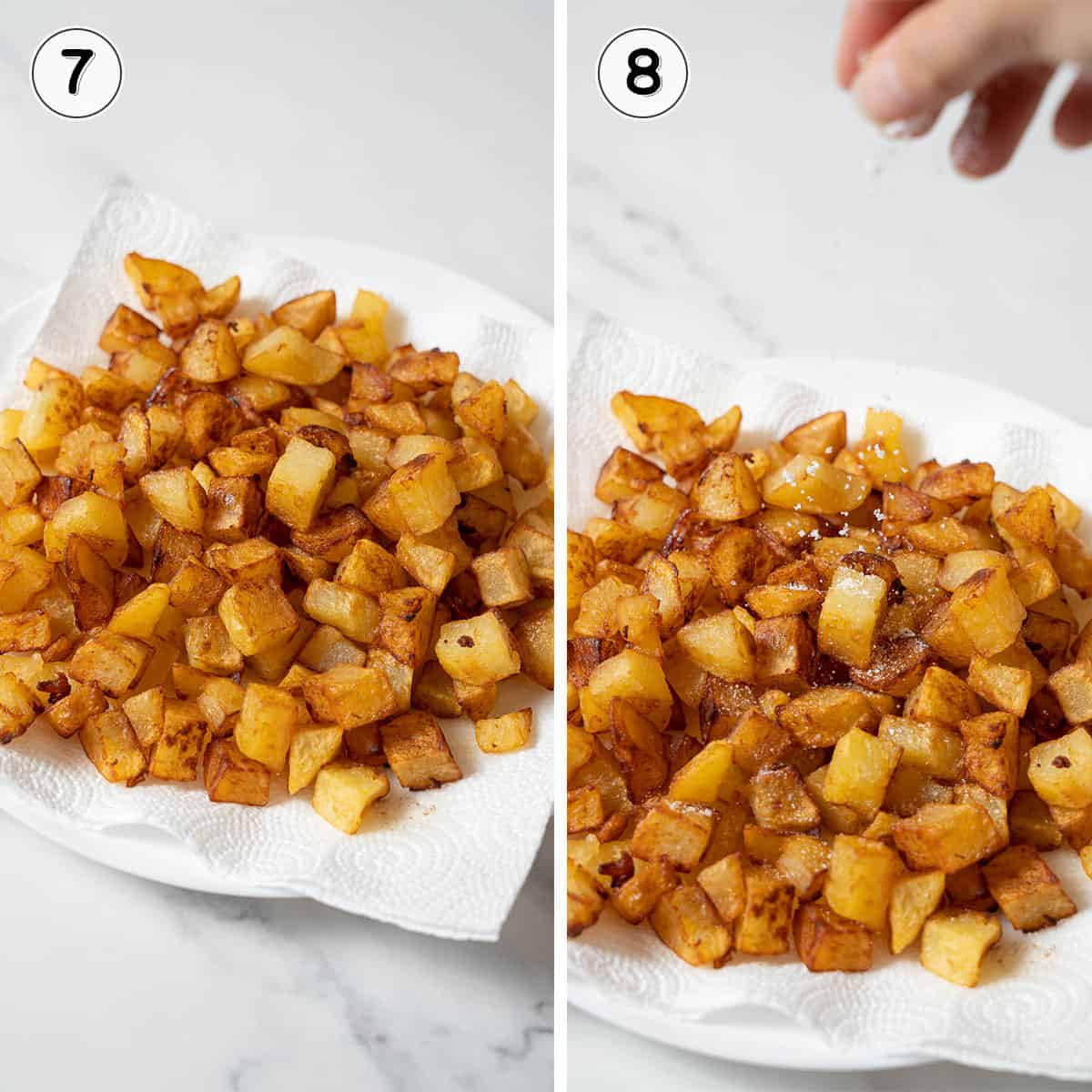
- Drain the hot potatoes on a paper towel-lined plate to catch excess grease.
- Immediately sprinkle them with salt for flavor.
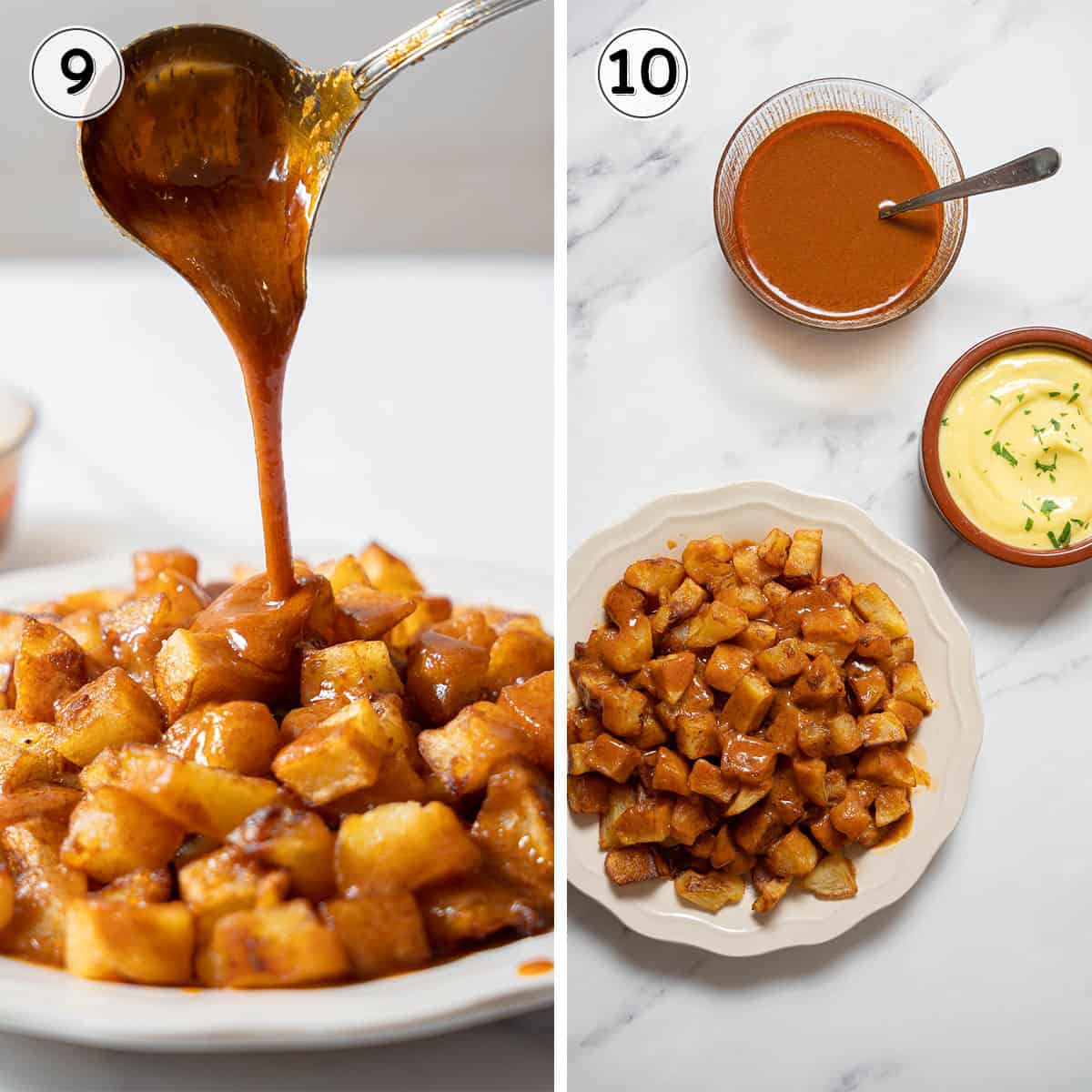
- Right before serving, drizzle with the bravas sauce.
- Enjoy these patatas bravas while they're hot and crispy!
Recipe FAQs
Bravas sauce is made from olive oil, sweet Spanish paprika, spicy Spanish paprika, flour, chicken or vegetable broth, and salt. The amount of spice can vary, but generally it's gently piquant rather than extremely hot.
Choose the same kind of potato you would use for French fries or home fries; a fluffy, all-purpose potato works best. In the US, russet is a great option, while in Europe, Maris Piper also works well.
Bravas literally translates to "brave," which refers to the spiciness of the dish. While spicy food aficionados probably wouldn't think bravas sauce is extremely spicy, it brings a delightful spice and vibrancy that you'll love!
Patatas bravas can also be known as papas bravas or patatas a la brava. The name patatas for potatoes is used in most of Spain, while the name papas is used in Latin America.
Serve
Make sure to serve patatas bravas with extra bravas sauce on the side. Drizzle with alioli for a lovely flavor contrast.
If you're looking for other tapas to round out your appetizer buffet, try some of these favorite recipes for pan con tomate, bacon wrapped dates, padrón peppers, and croquetas de jamón.
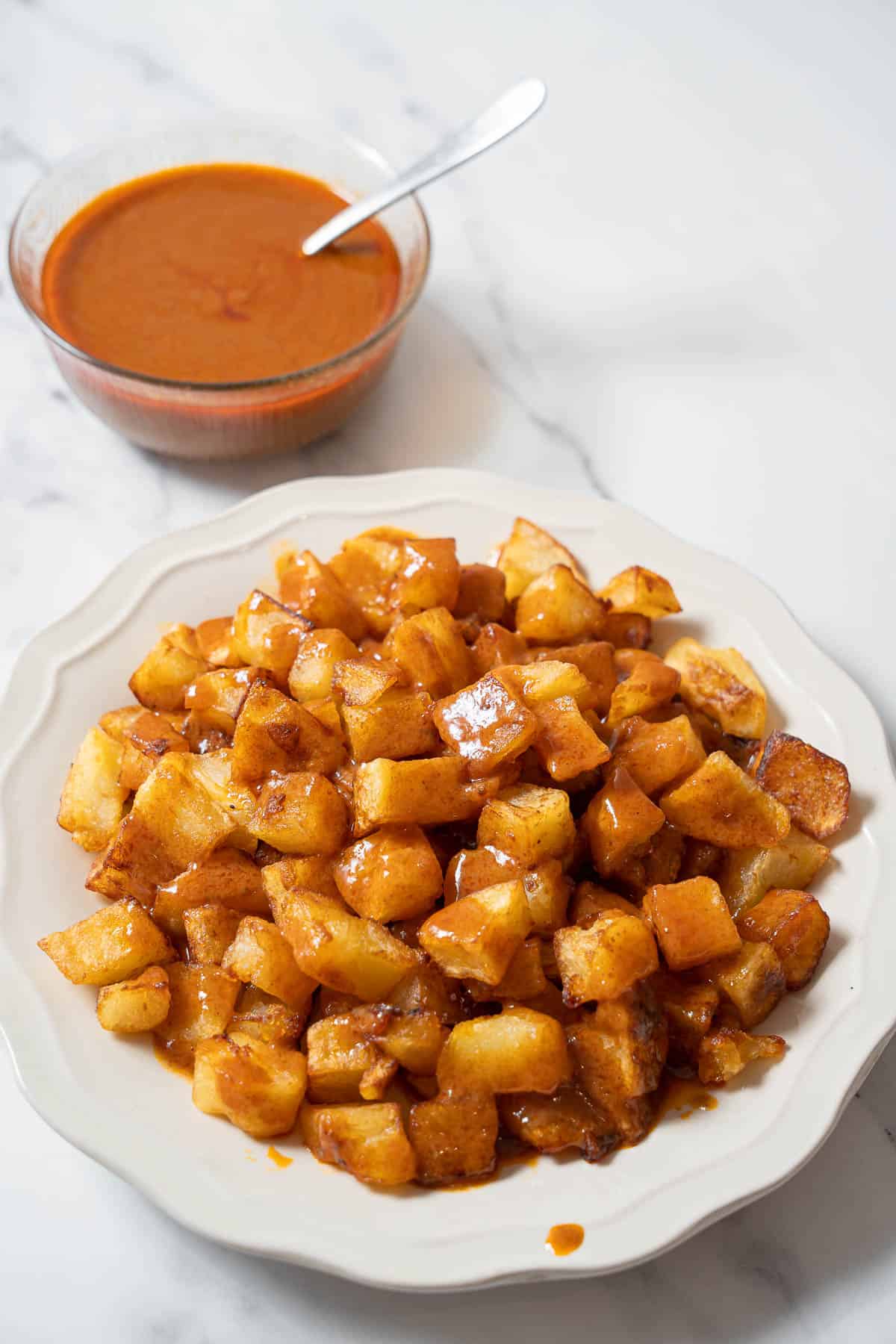
Store
Leftovers: It's best to eat patatas bravas right after cooking when the potatoes are still hot and crispy. However, leftovers will keep in the fridge for 3-4 days.
Freezing: Blanch the potatoes, then flash freeze them on a baking tray. Seal the frozen potatoes in a freezer bag and freeze for up to 6 months. (Read more about freezing fries.) When ready to cook, skip the pre-cooking step and proceed with the recipe starting with Step 4.
Expert Tips
- Dry the potato chunks thoroughly before frying to make them extra crispy.
- Serve with additional homemade bravas sauce or garlic alioli for a delicious flavor contrast.
- This recipe is vegan as long as the bravas sauce is vegan. Make your own with vegetable broth if you can't find vegan bravas sauce.
Other Tapas Recipes
You must use the category name, not a URL, in the category field.If you liked this recipe, please share it with others!
Follow Spanish Sabores on Facebook, Twitter, Pinterest, and Instagram for more recipes and travel tips.
If you've made and enjoyed this recipe, please leave a 5-star review!

Patatas Bravas Recipe
Ingredients
- 4 medium potatoes
- 1-2 cups olive oil for frying
- salt to taste
- ½ cup homemade bravas sauce
Instructions
- Peel the potatoes, then rinse and dry them thoroughly to help them crisp up. Cut into bite-sized chunks.
- Heat the olive oil 350°F (176°C) in a large skillet over medium heat. Add the potatoes and turn the heat to the lowest setting, then cook for a couple of minutes.
- Remove the potatoes from the oil with a skimmer, and let them cool in the fridge for a few minutes.
- Turn the heat up to high and reheat the oil to 350°F (176°C), then add the potatoes back into the pan. Fry until crispy and golden.
- Use a skimmer to transfer the potatoes to a paper towel-lined plate to cool, and sprinkle with salt to taste.
- Drizzle the bravas sauce over the potatoes, then serve immediately. Serve with toothpicks if desired.
Notes
- Dry the potato chunks thoroughly before frying to make them extra crispy.
- Serve with additional homemade bravas sauce or garlic alioli for a delicious flavor contrast.
- This recipe is vegan as long as the bravas sauce is vegan. Make your own with vegetable broth if you can't find vegan bravas sauce.
Nutrition
Photography by Giulia Verdinelli



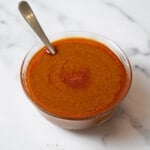
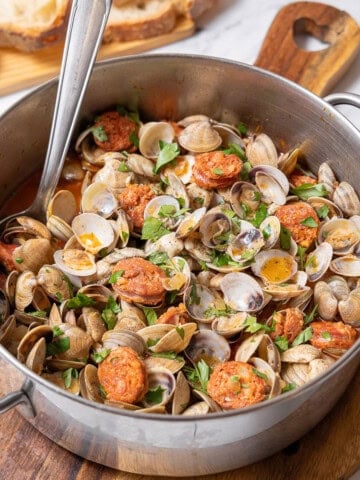
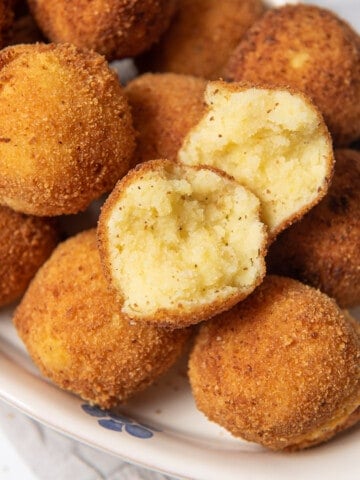
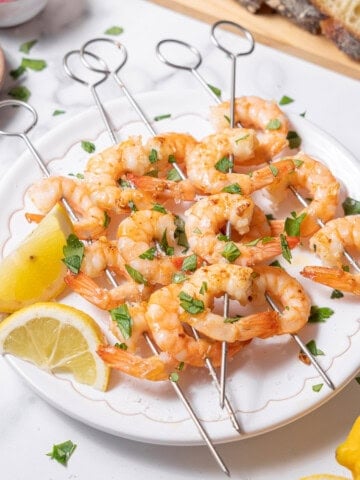
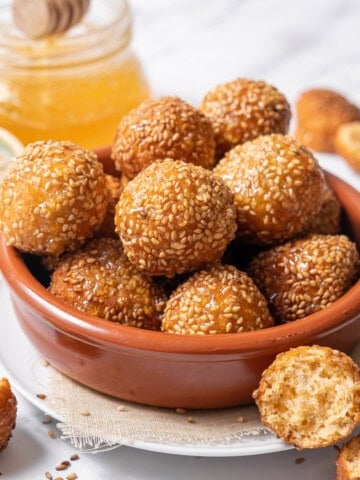
Jessica
I tried and loved. I used yukon gold potatoes and made the sauce with hot hungarian paprika because that's what my store had. I thought they turned out great.
Sumerlyn Vorachek
I am a true fan of spicy foods, and this recipe had just the perfect kick. the aioli mixed with the bravas sauce gave it a truly unique flavor. I also am I huge carb fan and love potatoes so honestly this recipe was a treat for me. I would definitely recommend this to a friend.
Marian Easthope
For authentic flavor use "Pimentón de la Vera" rather than paprika. It is the only ingredient so it makes a huge difference. Homemade chicken broth is recommended but truly it is the Pimentón (picante for hotness), that is key to genuine flavor.
Lauren Aloise
Totally true! It is smoked Spanish paprika for those wondering.
Angie
There were a lot of recipes online for patatas bravas, and I took a risk with this one—it only had one rating but looked easy and good. So glad I did. Just amazing!! Try the sauces too.!
Ken makokha
Good taste and flavor
Bryan
There are varieties I found to how Spaniards approach salsa brava with some disagreement over whether and how to use tomato and sweeteners as ingredients. (I'm a yes to both especially when I use a fresh tomato sofrito as part of my prep.)
But a tip I really treasure is one I got from Catalonia (which is also used by Ferrer, a brand of commercial sauce from Barçelona). It is to use almond—which I love as it adds a touch of familial flavor crossover to a romesco.
Have you tried par-boiling the potato chunks first in salted, alkaline water? It will make them go more crispy if that is a texture you like. Add about two grams of baking soda to each liter of salted water for the boil.
Lauren Aloise
Love these tips Bryan!
nitrous
yes, in fact, if you elect to avoid deep frying, try a preheated oven pan to 450F, and cook them for 10 minutes turning once and cook another 5-10 minutes. Olive oil and a little salt on the potatoes before roasting and you'll have great, lower fat patatas!
Lisa Maraszek
It came out way hotter than I expected. I had the dulce paprika that I used, but then I read that if I didn't also have the hot paprika, that I could sub in with cayenne. It came out pretty spicy, but hubby loves it, and I'm SO happy with making my own, versus a sotre-bought sauce in a bottle. Thank you! Our tapas gig tonight, we will be singing your praises.
Lauren Aloise
Yes - depending on the cayenne used it can be pretty spicy! Here in Spain, the cayenne pepper seems to be much less spicy than what I find in the US for example. But glad you enjoyed it!
Killian Moore
Air fryer version soon (Celsius) ? 🙂
Lauren Aloise
You can click for metric/celsius on the recipe card! Haven't tried an air fryer yet though!
Sylvia
Thanks for posting! I will try this. Is there a specific potato type you recommend using?
Lauren Aloise
Good question! I'd try something starchy, like Russet. Here in Spain I get potatoes from Galicia, which generally work well!